2003 was the year during which Porsche built its final 996-generation endurance racer equipped with a manual gearbox. We head to Killarney to drive a fine example of this 911 racer.
Words: Wilhelm Lutjeharms
Photos: Kian Eriksen
I feel slightly jittery. This is, after all, a top-tier Porsche 911 endurance racer – and its owner has just made sure I’m properly strapped in with the six-point harness, handed me the steering wheel and quickly said, “Enjoy” as he shuts the wafer-thin door firmly; the high-pitched ping as it closes reverberates throughout the cabin.
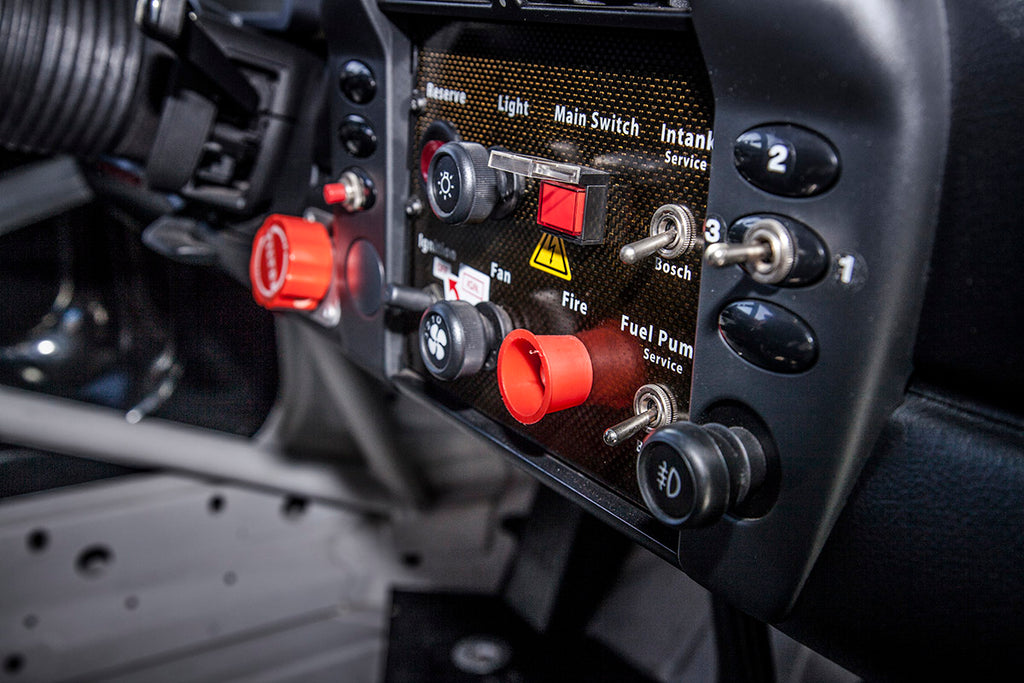
I flip the ignition switch to its middle position, press the red button above it, and then push the starter button to the left of the steering wheel. The flat-six engine turns immediately and instead of the usual engine noise, the naked race cabin is infiltrated by the rough and raw clack-clack-clacking sound of the flywheel as I test out the gearbox’s gate. Noise, vibration and harshness – yes, they are all accounted for!
First the history
But let’s quickly rewind 15 minutes. The owner warmed up the car in the pits before I took to the track. I eagerly watched as the digital Motec information cluster indicated how quickly the revs rose and fell. One assumes any road-going GT3’s engine is free revving, but I was astonished by how quickly the digital bars appeared and disappeared here. Oil temperature and pressure, as well as coolant temperature and lap times are only a few of the measurements displayed. However, as I was to find out later, I could only spare glances at the rev counter during my track outing.
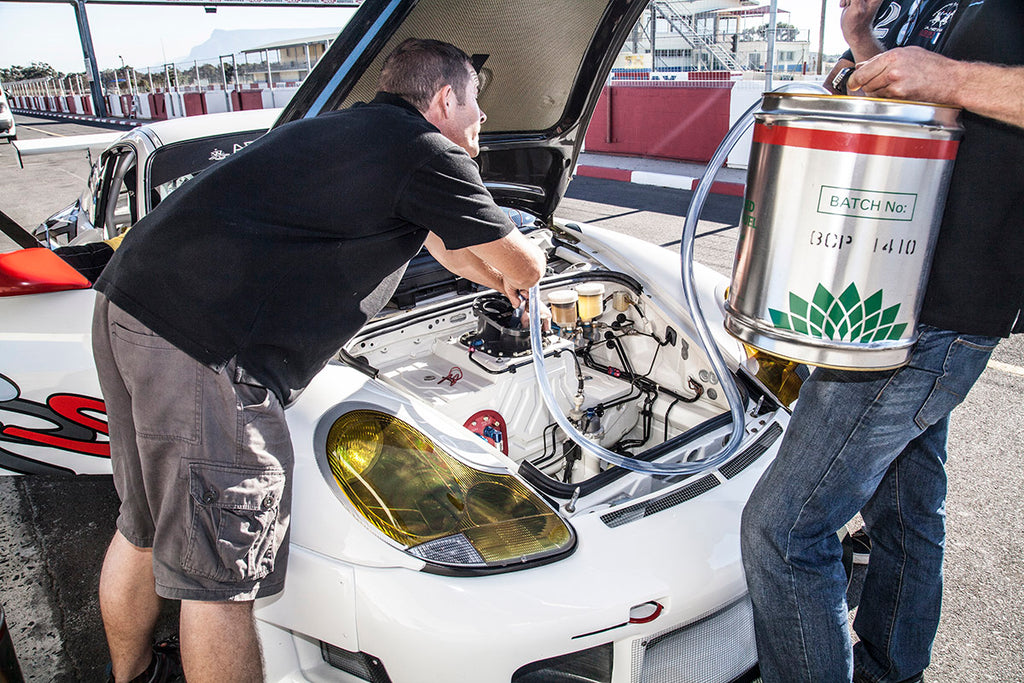
This car is one of only 20 GT3 RS race cars manufactured in 2003 and the only car of its kind in South Africa. In 2000, 66 GT3 Rs were produced, and the next year, when the race car’s name changed to GT3 RS (not to be confused with the road car of the same name), 51 were made. In 2002, 48 rolled off the production line. And in 2004 (28 built, followed by only ten in 2005), the car’s named changed again – to RSR. However, from that year onwards the 996-generation endurance racer featured the new six-speed sequential transmission. This means that these models from 2003 were the final 911 endurance racers to feature a six-speed manual gearbox. An interesting fact, as compared to the 911 road cars, Porsche is unlikely to ever build a manual race car again – the sequential box is integral to circuit racing.
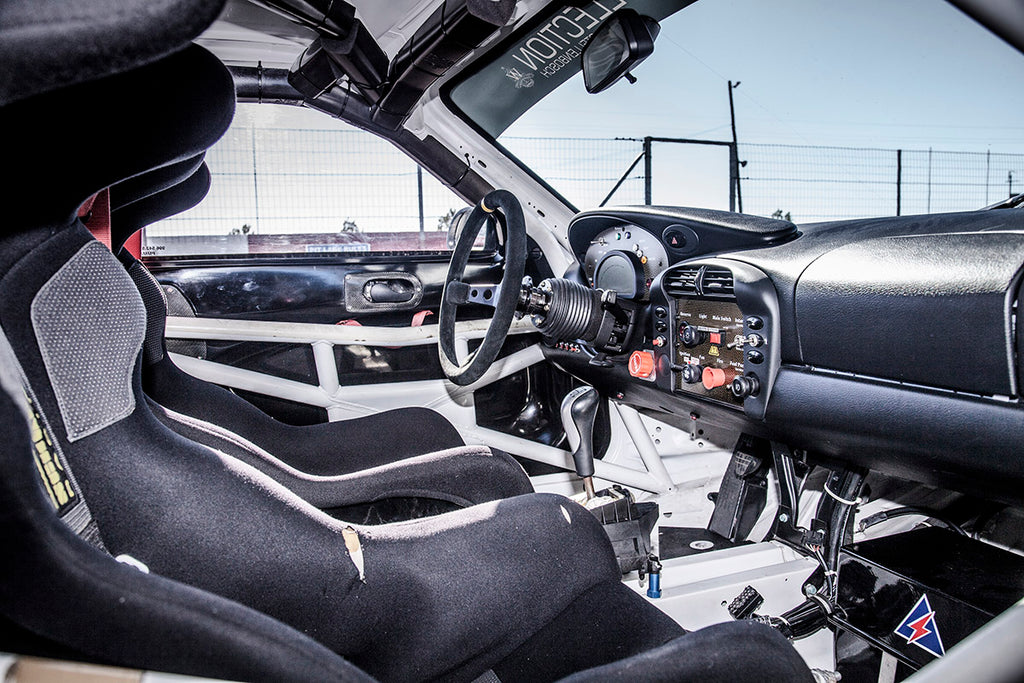
These race cars were based on 911 GT3 road cars. This means the water-cooled 3.6-litre engine was, for the 2003 model year, developing 324 kW at 8 250 rpm and 395Nm at a lofty 7 200 rpm.
This production year featured further updates to the car, including the fitment of larger brake calipers, but overall weight was reduced by 16 kg. Unfortunately, the RS’s full race exhaust is too loud for Killarney Raceway’s noise restrictions, but this doesn’t stop the owner from driving his car at Cape Town’s racing circuit – GT Clubsport, the company that maintains the car, manufactured two silencers for the RS. As I would later notice, they only marginally soften the RS’s voice.
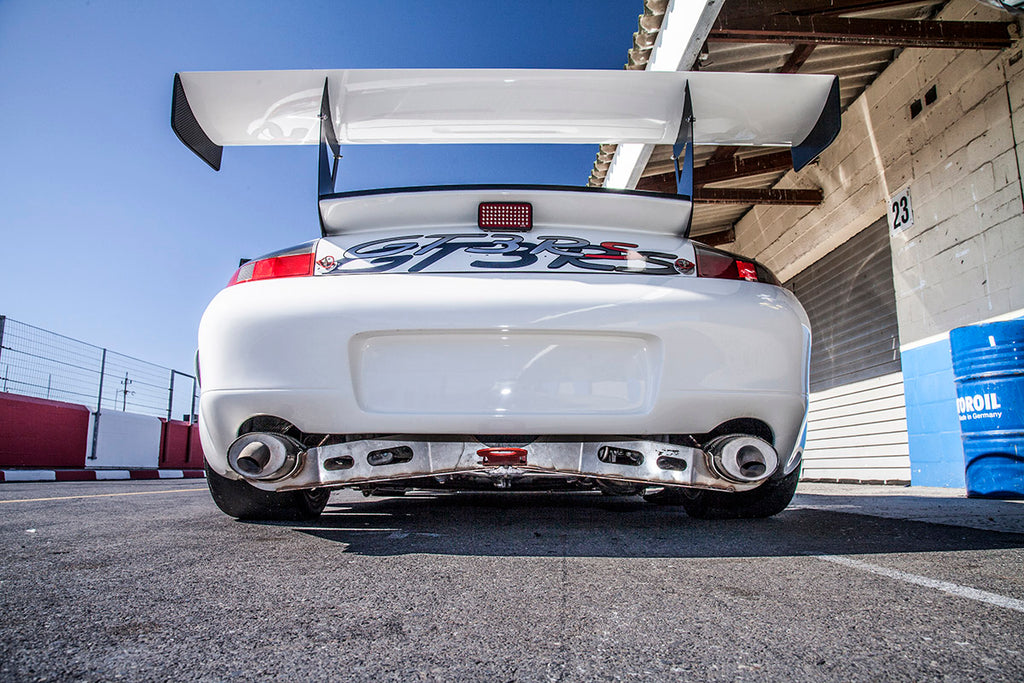
The engine also features titanium connecting rods and valves, as well as a dry-sump lubrication system with an oil-water heat exchanger. The clutch pedal is connected to a single-disc sintered friction clutch and an asymmetrical limited-slip differential with 40 per cent lock-up under load and 65 per cent on overrun and coasting. These are very tantalising details!
Clipped into the seat
Back into my run in the car, and as I let out the clutch for the first time I quickly realise these machines are 100 per cent race cars – making a smooth pull-away trickier to master. There is a different sensation from operating a race clutch than that of a standard GT3 road car. I can only describe it as ‘rougher’ than that of a road car. Finally, I partly relax.
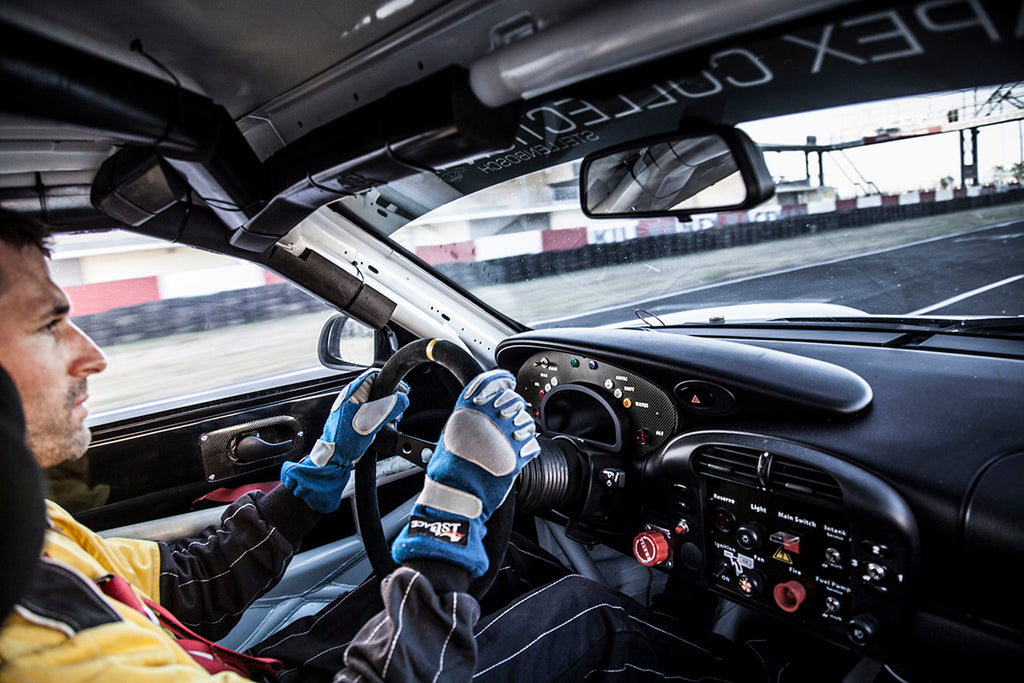
Because you sit so low in the car, you can’t see the front wings, which are usually visible when you’re in a road-going 911. You are so tightly strapped in, with the full roll cage visible around you and your helmet that your mind focuses on the track. The gearshift action feels the same as a 996 Cup car and, as expected, similar to that of a 996 GT3. The fact that you can see all the mechanisms running to the rear of the car from the gearlever only contributes to the whole experience.
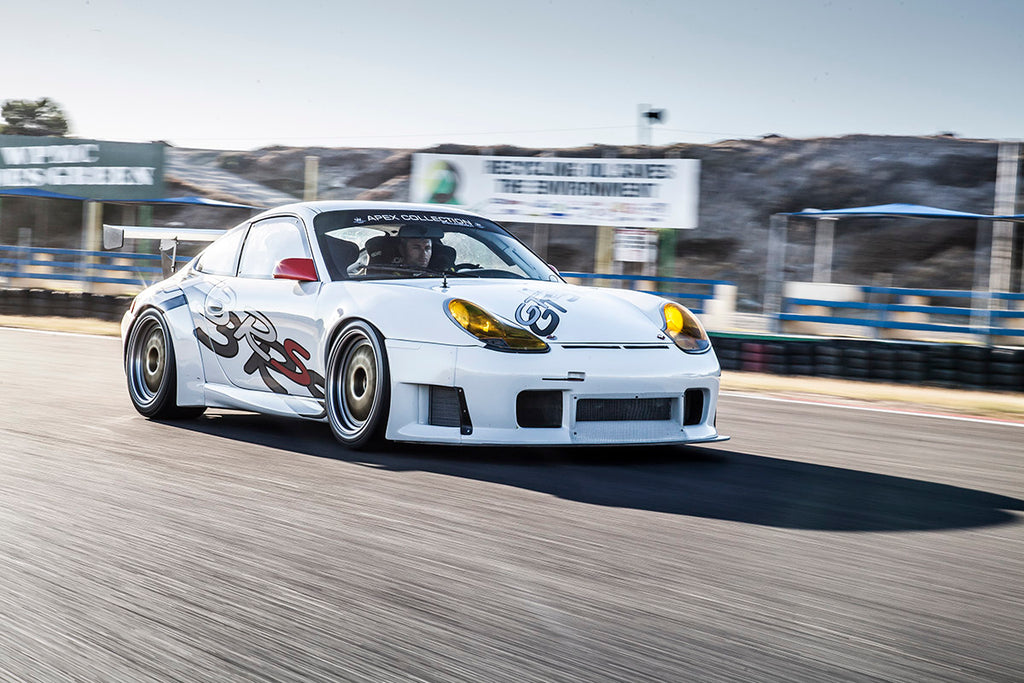
The throttle pedal is perfectly sensitive; it elicits instantaneous reactions from the engine. The clutch action, however, is the true highlight. It literally has around three inches of travel to its stop, so you are certainly never in doubt about the point of engagement.
As the RS gathers speed through the circuit’s (mostly constant radius) corners, I glance down to see the digital rev counter indicate 7 000 rpm and snap to the next gear. At last the flat-six engine’s voice drowns out the gearbox. The owner of GT Clubsport in Cape Town, Divan Luzmore, tells me that I ought to have heard the car before the silencers were fitted. “It positively sings down this main straight,” he muses.
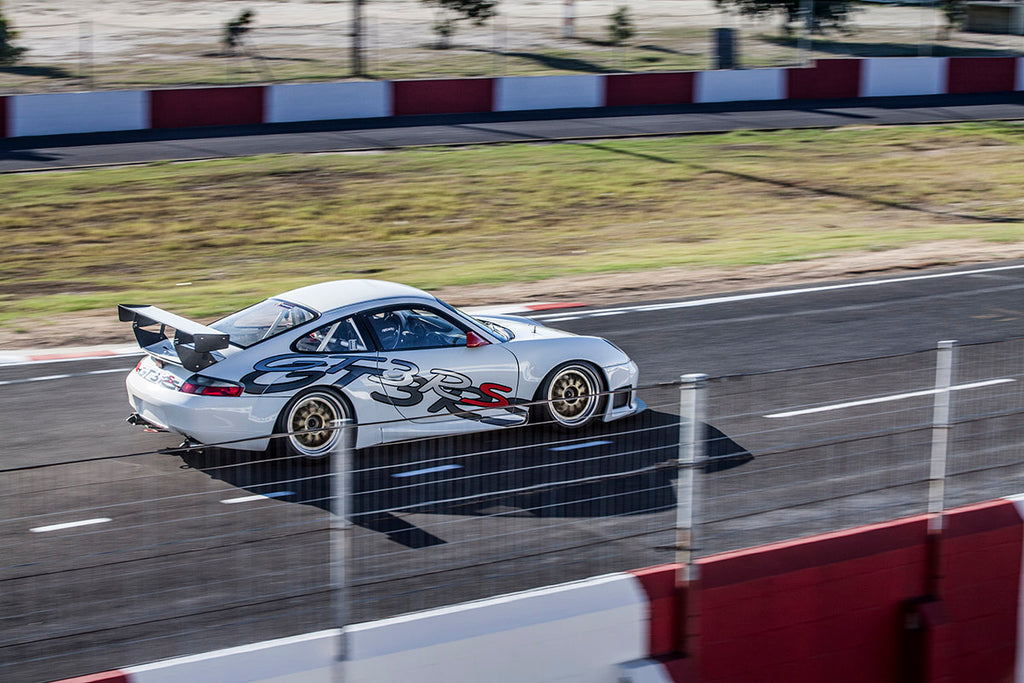
Although these wide, 18-inch race slicks are not new, they still do what they were intended to do – offer grip that is above my capability to fully explore, at least for the purposes of this excursion. But down the back straight I urge the RS all the way through third and fourth gears. The intensity with which the rev counter’s digital bars run past 8 000 rpm is worth savouring. If you have any mechanical sympathy, you almost feel as if you are doing the car an injustice, but then you realise it was built to be raced and relish the force of these naturally-aspirated Mezger engines.
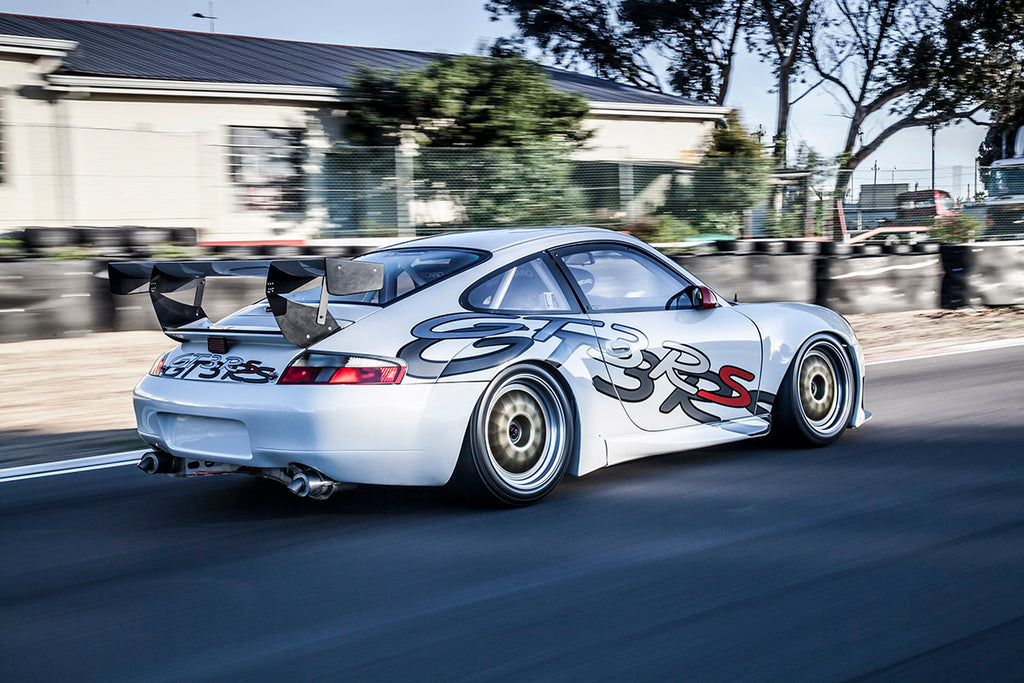
Next I lean onto the brake pedal with a firm right foot, and the RS quickly reduces its speed with no dipping of the nose whatsoever as the rubber digs into the tarmac. The steering configuration is sensitive in feel, but not overly so. You do discern a welcoming amount of feedback, but again, the faster you drive the more feedback you receive. Being an endurance racer, the RS’s system is also power assisted.
Same DNA
These cars are definitely a step up from the Cup cars, and they have myriad interesting, unique features. An obvious example is the fact that there is no fan over the front, centre radiator. This means that when you stop in the pits for a few minutes you have to switch off the engine, otherwise it will overheat.
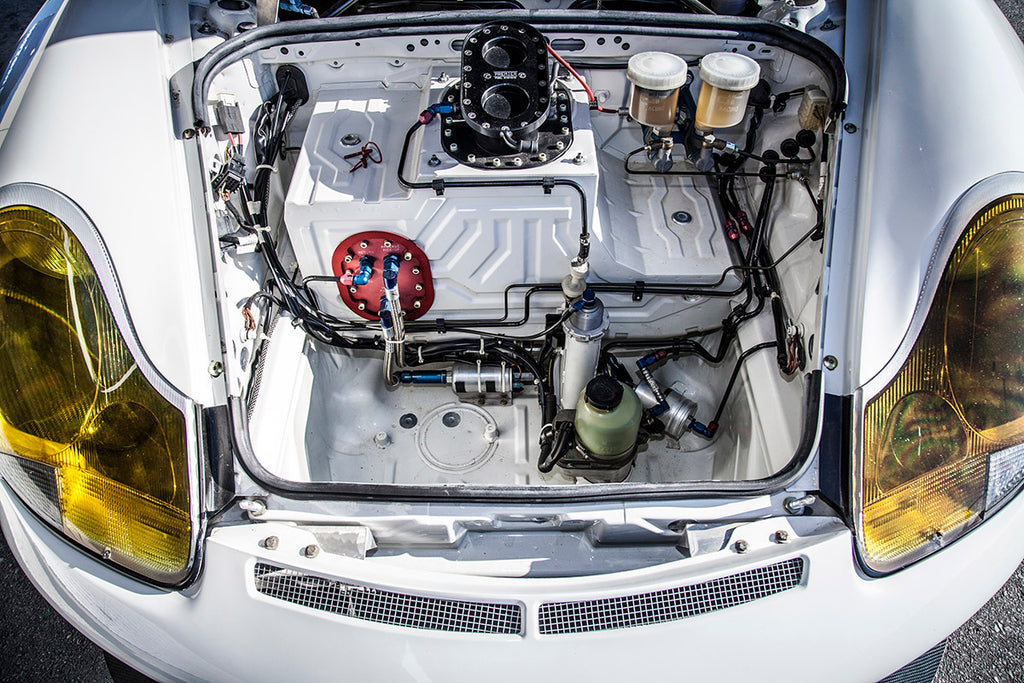
To have piloted these race cars continuously for six, nine, 12 or 24 hours during competitive and challenging race conditions must have been more of a challenge than in contemporary competition 911s, now fitted with paddle shift systems.
Having driven a 996 GT3 RS, a 996 Cup car and, now, an 996 RS endurance race car myself, I can attest to the fact that the same thread of iconic 911 DNA runs through the beating hearts and very souls of these road and race cars. It’s a stirring characteristic that not too many manufacturers can lay a claim to...
Specifications:
2003 996 Porsche 911 GT3 RS racer
Engine: 3.6-litre, flat-six, petrol
Power: 324 kW at 8 250 rpm
Torque: 395 Nm at 7 200 rpm
Compression ratio: 13.5:1
Transmission: 6-speed manual, RWD
Weight: 1 110 kg
Wheels and tyres: Front: 8.5x18-inch split-rim three- piece wheels; Pirelli PZero 265/645/R18 slicks
Wheels and tyres: Rear: 11x18-inch split-rim three-piece wheels, Pirelli PZero 305/660/ R18 slicks
0-100 km/h: N/A
Top speed: N/A

